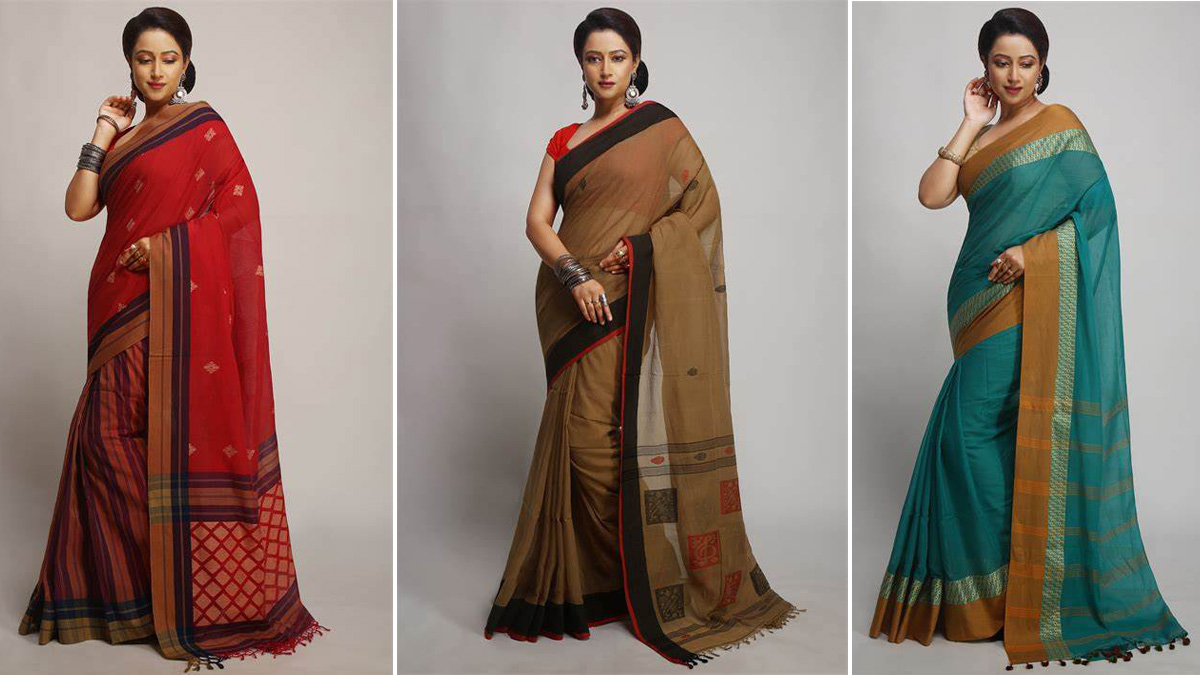The turf war between India and Bangladesh over the GI tag for the Tangail Saree is far from over as the Bangladesh government has now enlisted the services of the Indian law firm Mason & Associates to represent its interests. This disclosure was made on Monday by the Bangladesh Ministry of Industry in a written statement to the High Court bench led by Justice Muhammad Khurshid Alam Sarkar.
Established in 2006 by Neel Mason, Mason & Associates focusses on the practice of Intellectual Property (IP) Law. However, when contacted the law firm refrained from giving any comments on the case.
Barrister Sarowat Siraj Shukla from Tangail had filed the petition on 18 February, the Dhaka Tribune reported.
Tangail Saree GI row
The Tangail saree, a traditional handwoven masterpiece, has sparked considerable controversy between India and Bangladesh. The debate ignited when India’s Ministry of Culture claimed on 1 February that the saree originates from West Bengal, eliciting dismay and criticism. In response, Bangladesh’s Ministry of Industries swiftly recognized it as a Geographical Indication (GI) product of Bangladesh on 8 February.
The West Bengal State Handloom Weavers Co-Operative Society Limited, headquartered in Kolkata, took proactive steps to secure the Tangail saree’s heritage. Their application for geographical indication status was approved by the Indian Geographical Indications Registry on 2 January, 2024. This registration, initiated on 8 September, 2020, serves to safeguard the authenticity of the Tangail saree until 8 September, 2030.
It is believed in Bangladesh that the Tangail Saree has originated from the Tangail district in Bangladesh and have remained part of the country’s cultural heritage for ages. The Tangail Saree, often referred to as “Tangail Jamdani,” is a traditional handwoven saree renowned for its intricate motifs, lightweight texture and airy feel, making it a popular choice for warm climates and special occasions.
Impact Shorts
More ShortsWest Bengal chief minister Mamata Banerjee also tweeted about GI tags to three state products including the “Tangail of Nadia”.
Chandra Shekhar Saha, a renowned designer, researcher and President of the National Crafts Council of Bangladesh told The Daily Star about the geographical association of the Tangail district with Bangladesh and lamented the fact that India had received the GI tag for a similar product.
Amid the aftermath of the 1971 Liberation War, a significant exodus of Tangail weavers sought sanctuary in India, notably in West Bengal. This mass migration spurred the emergence of dynamic weaving enclaves in the region. Rooted in history, the Basak community, pivotal to Tangail saree weaving in Bangladesh, embarked on a journey across borders during the Partition, dispersing their rich textile heritage.
As reported by The Business Standard in Bangladesh, the origins of the Tangail saree dates back to the British colonial era. Villages such as Pathrail, Nolshodha and Gharinda have been identified as pivotal in the genesis of this textile artistry. A significant aspect of this narrative lies in the involvement of the Basak community, a Hindu migrant weavers’ group originating from the lineage of traditional muslin weavers who inhabited the Dhamrai and Chauhatta regions of Dhaka district circa 1850. With time, due to invitations and patronage from landlords in Delduar, Santosh and Gharinda areas of Tangail, the Basak weavers migrated to these locales. Consequently, the sarees they meticulously crafted came to be known as Tangail sarees.
Presently, Bangladesh boasts approximately 34,000 looms dedicated to the craft.
)